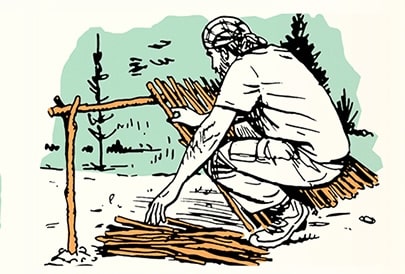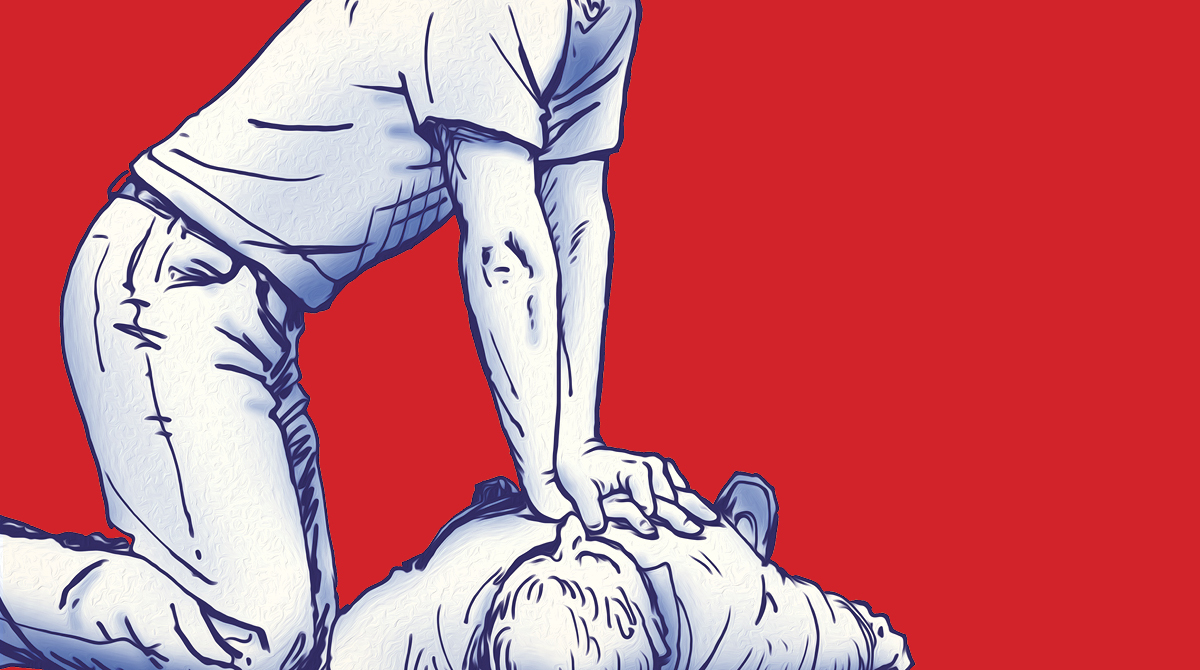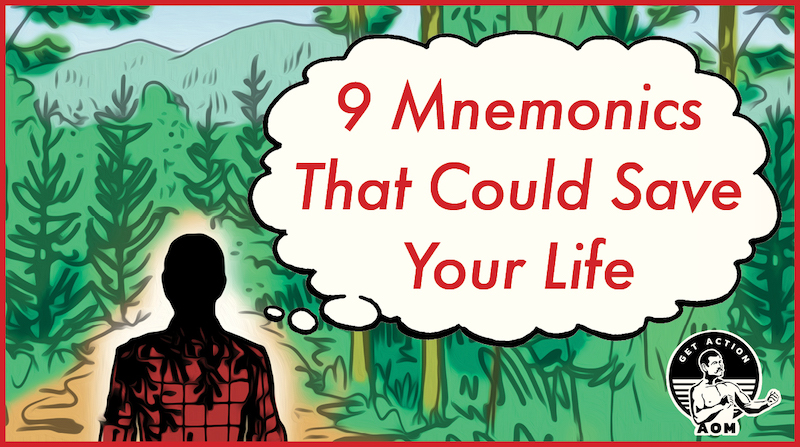
With our archives now 3,500+ articles deep, we’ve decided to republish a classic piece each Sunday to help our newer readers discover some of the best, evergreen gems from the past. This article was originally published in September 2020.
When it comes to trying to save a life — either someone else’s or your own — it can be hard to remember what to do. Not only because the breadth of survival/first aid know-how is so vast, but because it’s hard to think clearly in a threatening situation.
That’s where mnemonics — the use of rhymes, acronyms, and other techniques to more easily remember something — come in handy. For example, you likely conjure up the cardinal directions by saying “Never Eat Shredded Wheat,” remember the colors of the rainbow by thinking of that colorful fellow ROY G. BIV, and remind yourself to avoid touching poison ivy by rehearsing the old “leaves of three, let them be” admonition.
Below are 9 mnemonics related to first aid and survival that can be easily memorized now, and readily pulled out in case of emergency later:
To identify venomous snakes: Red on yellow, kill a fellow; red on black, friend of Jack
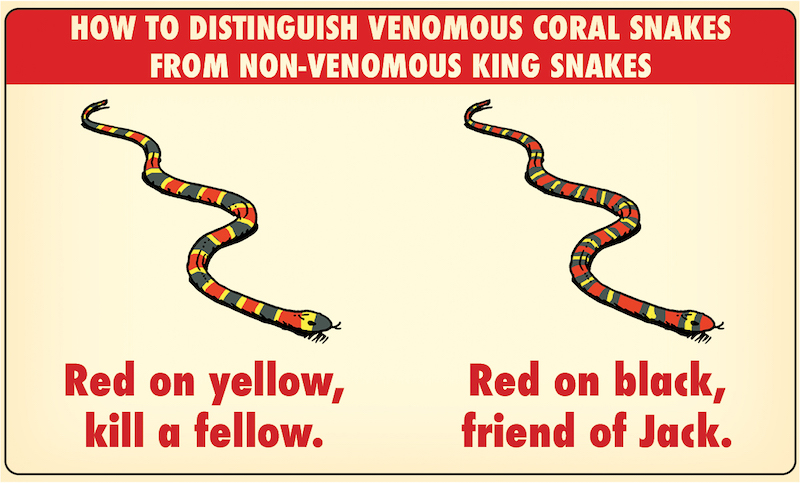
This classic rhyme is a help in differentiating venomous coral snakes from similar looking but nonvenomous king snakes. The former sport alternating black, yellow, and red bands of color in which the red and yellow stripes touch each other; a king snake has the same bands of color but in a different pattern, so that the red stripes touch the black.
It’s important to keep in mind that this mnemonic only holds true for North America; other species of coral snakes exist outside the continent with different markings. One should also keep in mind that king snakes are not exactly a “friend” in the sense that you’d want to handle them; even if nonvenomous, they can still bite, and snakebites of any kind aren’t pleasant.
To recognize if someone is having a heart attack: PULSE
Pain in the chest, jaw, neck, back, or arms
Upset stomach (nausea, vomiting, indigestion)
Lightheadedness (or dizziness)
Shortness of breath
Excessive sweating
The hour after a heart attack happens is referred to as the “golden hour,” as the sooner a victim can get medical treatment, the better the chance of mitigating the irreversible, tissue-killing damage that follows in its wake. As another popular phrase in the medical community goes, “time is muscle,” so know the signs of a heart attack well and familiarize yourself with what to do in case one occurs.
To recognize if someone if having a stroke: FAST
Face drooping
Arm weakness
Speech slurring
Time to call 9-1-1, if you see these symptoms
Just as with a heart attack, every minute counts when someone has a stroke, and the sooner you recognize one is happening, and seek medical attention, the better the chance of survival and of preventing long-term disability.
To save someone from drowning: Reach, throw, row, go

If you see someone drowning (which can be harder to recognize than you think), your first instinct is likely to jump into the water to save them. But this actually isn’t the best course of action; drowning people aren’t only a danger to themselves, but to their would-be rescuer; panicked and flailing about, they can pull and push you under when you’re trying to help.
It’s thus better to avoid entering the water if possible and to follow the options for action in the order of this mnemonic: If the victim is close to the shoreline, reach a pole or branch to them; if they’re too far out to be reached with that kind of object, throw a rope or safety ring to them; if they’re too far away to rescue with these first two methods, row (or motor, killing the engine as you approach) a boat to get closer, and then reach, throw, or lift them from inside the watercraft; if the victim cannot be reached by pole, rope, or boat, or is unconscious/distressed and thus unable to grab a flotation device, only then should you go into the water. Someone availing themselves to this final option should be a strong swimmer trained in lifesaving techniques.
To predict a coming storm: Red sky at night, sailor’s delight; red sky in morning, sailors take warning
Referring to the orange-red glow which appears at sunrise/sunset, this saying is so old and famous a variation of it is quoted by Jesus in the book of Matthew.
A red night sky can mean that a high-pressure system (which brings clear weather) is moving in, or has moved in, from the west. This weather system traps particles in the air, which scatters the blue light of the sun, creating the reddish glow.
A red sky in morning can signify that a high-pressure system is moving towards the east and a low-pressure system (which can bring wind, rain, and storms) is moving in from the west.
This rule of thumb is most correct when you’re positioned at middle latitudes. Air quality and pollution can also skew things some. You can find 21 weather proverbs that are even more straightforwardly accurate here.
To effectively use a fire extinguisher: PASS
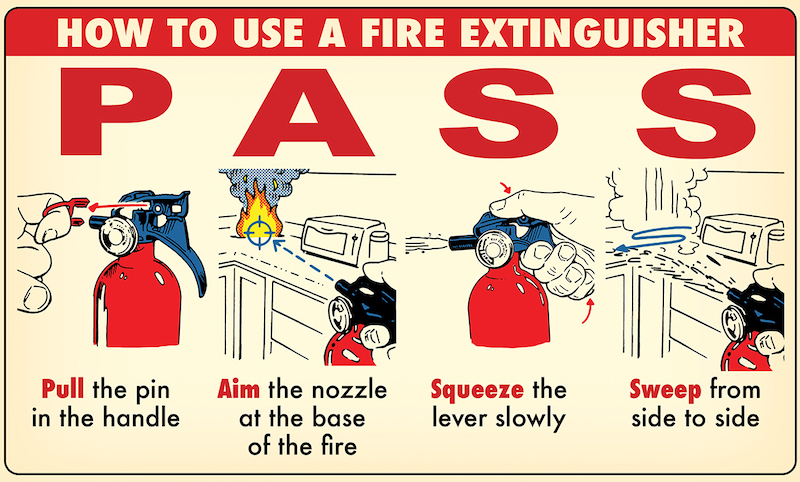
Pull the pin in the handle
Aim at the base of the fire
Squeeze the trigger
Sweep across the fire
You’ve see fire extinguishers around so often, it’s easy to believe you’d just naturally know how to use one should the need arise. But while extinguishers are indeed fairly simple in design, it’s the kind of thing you can fumble around with in the literal heat of the moment. It’s thus worth familiarizing yourself with when and how to use one; the PASS acronym can help you remember the basics.
To survive a bear attack: If it’s brown, lie down; if it’s black, fight back
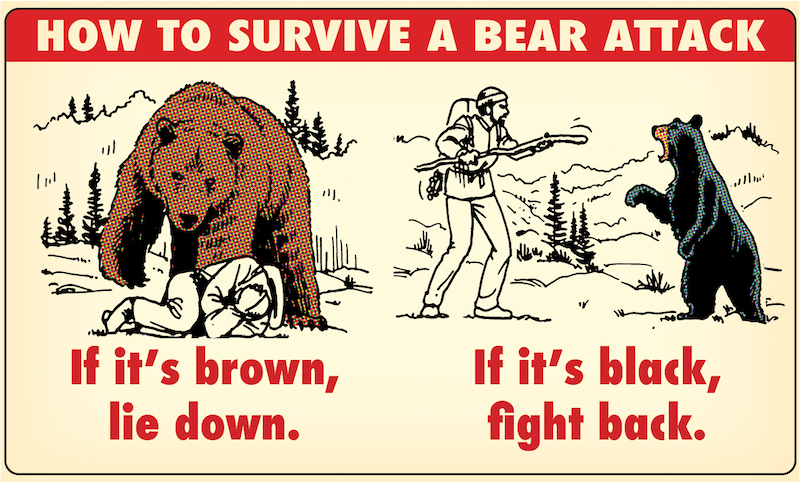
How you should respond to a bear attack depends on the kind of bear you’re dealing with.
With a brown/grizzly bear, fighting back will often increase the ferocity of the attack, so you instead want to play dead, lying still with your stomach on the ground, and your hands protecting the back of your neck.
With a black bear, you want to stand your ground, making yourself look as big and imposing as possible, and fighting back with blows to its face and muzzle.
To collect yourself when lost: STOP
Stop where you are
Think about your situation
Observe what is around you
Plan your next actions
When you’re lost, it can be easy to work yourself into a panic that only makes your situation worse. Instead, you want to STOP, which begins with literally stopping where you are (tell kids to “hug a tree”), as staying put can actually help you get found/back on track better than frenetically moving further and further afield. After you sit down, you want do some thinking — about when you first realized you were lost, what resources for navigation/survival you have at your disposal, etc. Then you observe — seeing what in your environment might point you in the right direction or be used to send out a distress signal, and looking at a map to orient yourself. Finally, you formulate a plan, deciding whether you think you can retrace your steps or it’s better to stay put, and what your survival priorities are (see below) and how to obtain them.
To assess your survival priorities: Rule of Threes
3 hours without shelter (depending on environmental conditions)
3 days without water
3 weeks without food
In a survival situation, you have basic needs that have to be met to stay alive, but each is not equally urgent, and you want to prioritize the allocation of your energies appropriately: first getting out of extreme heat/cold; then finding a source of water; and finally figuring out how to find food.
The fact that you can survive 3 minutes without air is also sometimes thrown into the “Rule of Threes” mnemonic, but of course that only applies should you find yourself choking or underwater!




